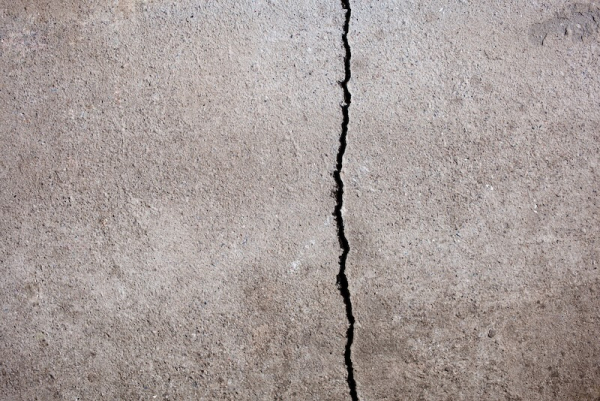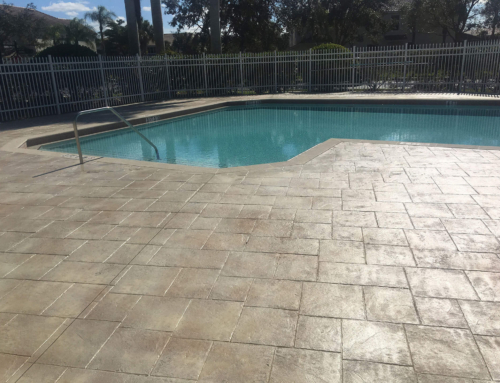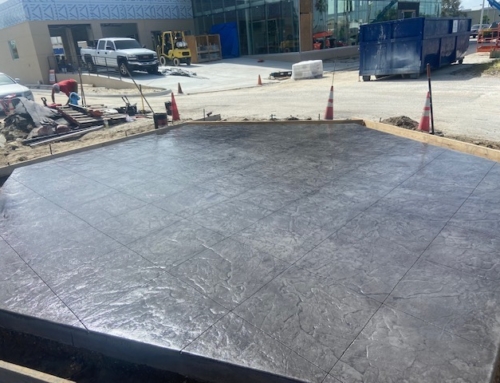Are you frustrated by worn, dull, or outdated concrete on your patio, driveway, walkway, or pool deck? Maybe you’re tired of seeing cracks and stains every time you step outside, but the thought of tearing out and replacing your concrete feels overwhelming and expensive.
You might be wondering if there’s a simpler, less invasive solution. Fortunately, you can stamp existing concrete—transforming your outdoor spaces without extensive demolition. However, success depends on specific surface conditions, preparation steps, and professional techniques.
Understanding these critical factors upfront ensures beautiful, long-lasting results. Here, you’ll discover exactly how stamping existing concrete works, when it’s feasible, and what alternatives are available if your concrete isn’t suitable, helping you confidently enhance your home’s curb appeal.
Why Homeowners Are Asking This Question
If you’re like many homeowners, you’re probably searching for a budget-friendly way to refresh the concrete around your home. Replacing concrete entirely can feel intimidating—not only because of the cost but also because of the disruption involved. Often, patios, driveways, and pool decks look worn out from weather, stains, or simply age. That doesn’t mean you have to rip everything out and start over.
Stamped concrete has become increasingly popular because it beautifully mimics the look of brick, natural stone, or even wood at a fraction of the cost. Instead of paying high prices for these premium materials, stamped concrete overlays allow you to achieve the same stylish, textured look on your existing concrete slab. This makes stamped concrete overlays especially appealing if you’re looking for a quick yet lasting solution.
Beyond cost savings, many homeowners prefer overlays because they’re significantly less disruptive than tearing out and replacing concrete entirely. With an overlay, your yard or driveway won’t be turned into a long-term construction zone. You’ll also experience less mess and inconvenience, so you can start enjoying your upgraded outdoor spaces sooner.
Can You Really Stamp Over Existing Concrete?
The good news is, yes—you can stamp existing concrete, but certain conditions must be met. Stamped concrete overlays are specifically designed to be applied over existing surfaces, making it possible to renew old concrete slabs without removal.
However, not every existing concrete surface is suitable. To successfully apply a stampable concrete overlay, the underlying concrete needs to be in relatively good condition. Your concrete slab should be structurally sound, without large cracks or severe damage.
Because conditions vary from one property to another, having a professional inspect your concrete first is essential. An inspection helps determine if your existing surface can support a stamped overlay, ensuring a durable and attractive final result.
Conditions That Must Be Met First
Before you stamp existing concrete, your slab needs to meet specific requirements. Skipping this step could cause issues later, like cracks, peeling, or poor drainage. That’s why careful surface preparation matters.
Here are three essential conditions your existing concrete surface should meet before applying a stampable overlay:
- Structurally Sound Concrete:
Your existing slab must be strong and stable. Large cracks, deep holes, or sinking areas signal bigger issues beneath the surface. If your slab moves or shifts when you walk on it, a stamped concrete overlay won’t fix it. You’ll need a professional to inspect and confirm your slab is suitable before you move forward. - Thorough Surface Cleaning and Preparation
Your existing concrete surface needs to be spotless before adding a stampable overlay. Any oil, dirt, paint, or loose cement will prevent the overlay mix from bonding properly. A professional typically cleans your concrete using special tools like pressure washers and grinding machines. This helps the new concrete layer bond securely, preventing cracking or peeling down the line. - Proper Slope and Drainage
Water pooling on your surface isn’t just a nuisance—it can damage your stamped concrete overlay. A proper slope ensures water drains away quickly after rain or washing. Without good drainage, even structurally sound concrete can degrade over time, leaving your surface in bad shape again.
Professional Process: What to Expect
When hiring a pro to stamp existing concrete, the process usually takes about three to five days. Knowing what to expect aids your planning.
Here’s what the professional installation typically looks like, step by step:
Step 1: Inspection and Repair
The contractor inspects your concrete slab thoroughly. They fix small cracks, fill minor holes, and level uneven areas to create a smooth surface. Structural repairs ensure your stamped overlay will last.
Step 2: Applying Bonding Agents and Overlay Material
A special bonding agent is applied over your concrete. This helps the overlay mix firmly stick to your slab. Next, a thick overlay mix is spread evenly using a gauge rake. Professionals apply it carefully according to the manufacturer’s instructions for maximum strength and durability.
Step 3: Stamping Patterns and Adding Color
While the overlay is fresh, your chosen patterned concrete stamps are pressed into the surface. Professionals can also add integral color or use water-based stains and tinted sealers to give your new concrete a realistic stone, brick, or wood appearance.
Step 4: Sealing and Curing
Once the overlay dries, your stamped concrete surface receives a UV-resistant sealer. The sealer protects against sun damage and stains, preventing cracks and keeping your surface looking vibrant. It typically cures within one to two days, allowing you to use your refreshed patio or driveway quickly.
When Stamping Won’t Work—and What to Do Instead

Even though it’s possible to stamp existing concrete, some surfaces are simply beyond repair. Trying to stamp concrete that’s severely damaged or unstable often leads to costly issues down the road. You’ll recognize these surfaces by their deep cracks, severe erosion, or major heaving caused by tree roots. In these cases, a stamped concrete overlay isn’t recommended.
Additionally, heavy staining—like oil or chemical stains—might prevent overlays from bonding properly. If your slab’s sub-base (the underlying support) is weak or crumbling, stamping won’t fix the issue. Applying overlays to unstable surfaces is like putting fresh paint on rotten wood: it won’t last.
Instead, here are two reliable alternatives to consider:
|
Alternative Solution |
When It’s Recommended |
|---|---|
|
Remove and Replace Concrete |
Best for structurally unsound slabs, major cracks, erosion, or heaving from tree roots. Provides a completely fresh and durable foundation. |
|
Decorative Coatings |
Ideal for surfaces with minor cosmetic flaws, stains, or small imperfections. Coatings hide discoloration and provide slip-resistance at lower cost. |
If your existing surface shows major problems, removal and replacement give you the safest long-term solution. While the upfront cost may be higher, it ensures your concrete stays solid for years. For minor damage or cosmetic concerns, decorative coatings are a budget-friendly choice. They provide a clean, fresh look without the complexity or higher stamped concrete overlay cost.
Key Takeaways Before You Resurface
Stamping existing concrete can greatly improve your home’s curb appeal—but only if conditions are right. Keep these important points in mind before you start your concrete resurfacing project:
- Stamping over existing concrete is often possible, but it’s not always the best solution. Your surface must be structurally sound and stable enough to hold an overlay.
- The surface condition, climate, and load-bearing requirements all affect the success of stamped concrete overlays. What works for your neighbor’s driveway might not be ideal for your pool deck or patio.
- Always hire a licensed professional to inspect and prep your surface. Proper surface preparation, concrete mix selection, and installation methods ensure a quality finish and prevent costly mistakes.
- Don’t overlook aesthetics—choose a pattern and color that fits your home’s style. You have many options to customize, ensuring your new stamped concrete complements your outdoor spaces beautifully.
At Creative Resurfacing Solutions, our expert team specializes in transforming existing concrete surfaces into beautiful stamped concrete masterpieces. Reach out today for an inspection and personalized recommendations to upgrade your outdoor spaces confidently and affordably.
Frequently Asked Questions
- Can you stamp concrete after it has dried?
Yes, stamping dried concrete is possible using stampable overlays. A specialized concrete resurfacing material is applied to the existing slab, allowing new patterns and colors to be added without removing the old surface.
- How much does a stamped concrete overlay cost per square foot?
Stamped concrete overlay costs typically range from $8 to $15 per square foot. Moreover, it would highly depend on the chosen pattern, colors, surface preparation needs, and local labor rates.
- How long does a stamped concrete overlay last?
A properly installed and maintained stamped concrete overlay can last 10 to 15 years or more. Regular cleaning, sealing every few years, and addressing minor issues promptly extend its lifespan significantly.
- Can all existing concrete surfaces be stamped?
No, not every concrete slab is suitable for stamping. The existing concrete must be structurally sound, free of major cracks or deep erosion, and thoroughly cleaned for the overlay to bond securely.
- Is it cheaper to stamp existing concrete or replace it?
Stamping existing concrete is generally more cost-effective than full replacement. You save on demolition and disposal costs and experience minimal disruption compared to tearing out and replacing concrete entirely.
- What happens if stamped concrete isn’t sealed?
If stamped concrete isn’t sealed properly, it may fade, stain, or crack prematurely due to weather, UV exposure, and water damage. Regular sealing protects the surface, preserves color, and ensures durability.






